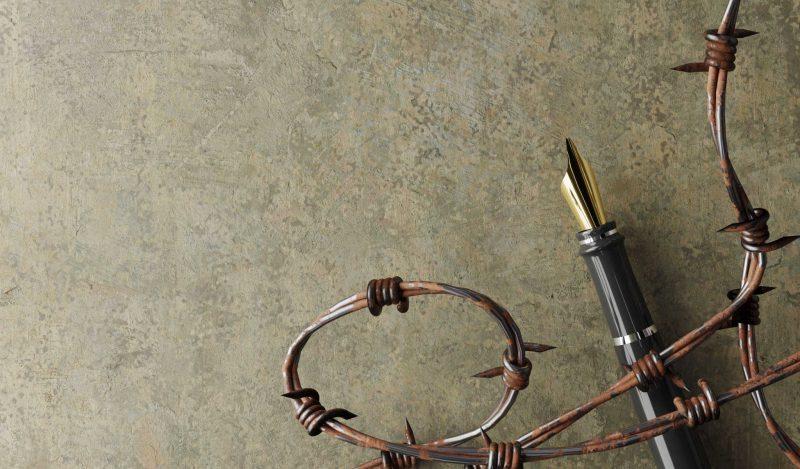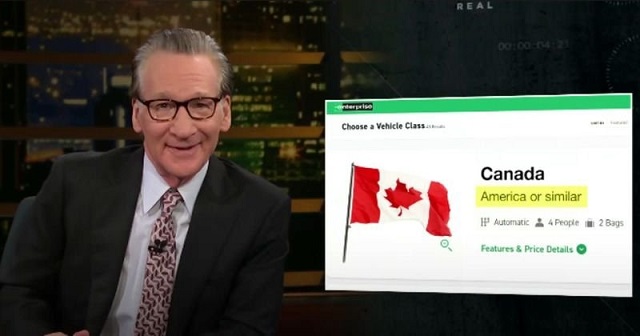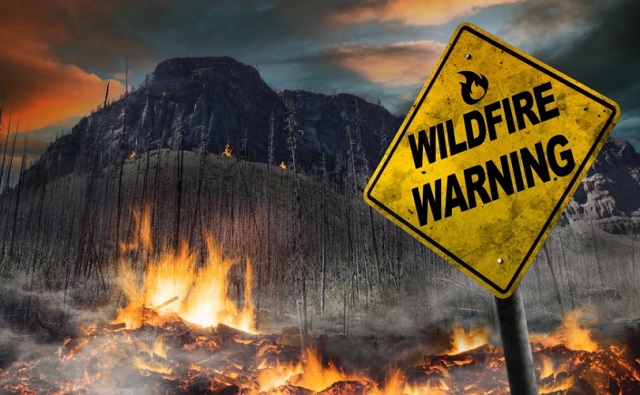Brownstone Institute
How Major Media Suppressed My COVID Journalism

From the Brownstone Institute
BY
The COVID-19 emergency has at last come to an end as even the most restrictive countries — the United States, most recently — have lifted draconian Covid mandates. Freedom has been restored, but the pandemic has left an indelible mark on the bedrock institutions of our society. The corruption of the FDA, CDC, the White House, and Big Pharma has been undeniably exposed — a topic I have exhaustively covered for over a year.
Notably, journalism — the filter through which ordinary people living busy lives come to understand the complex matrix of power, money, and influence — has also been exposed for its bizarre servility to public health decrees and pharmaceutical companies. Writing for the most prominent journalistic outlets since 2020, I saw the decay from the inside. Though I have been hesitant to share my experiences of colliding with the inner machinery of media — for my reputational and financial security — I now feel galvanized to lay it on the table after starting a new Substack with Dr. Jay Bhattacharya.
One of the reasons I unexpectedly found myself in the journalism industry was the real possibility of speaking truth to power, presenting radically novel perspectives, and challenging institutional orthodoxy.
My first major forays into the industry were on topics such as how my experiences with racism from childhood inform my view of race relations, how white guilt and identity politics corrupts our discourse, and how 2020 Black Lives Matter riots wreaked havoc in poor, minority communities.

Pieces that I’m perhaps most proud of are the explosion of inner-city violence in Minneapolis in the aftermath of George Floyd and the new phenomenon of Asian women out-earning white men in the US.
My heterodoxy and unwavering commitment to the truth — whether that made me look right-wing, left-wing, or just an artsy weirdo (at times) — didn’t land me a weekly New York Times column, but it did grant me spots in a number of top liberal and conservative-leaning outlets, such as the New York Post, the Globe and Mail, Foreign Policy Magazine, the Grammys (yes, the music awards — their online vertical), and others.
Until it didn’t.
Having taken the heretical line on race, gender, policing, I thought I was immunized from editorial censorship. But, as the pandemic became increasingly politicized through 2021 and 2022 with the rollout of vaccines and public mandates, our society seemed to plunge into further collective psychosis, as spiritual teacher Eckhart Tolle has persipaciously observed.
For the first year-and-a-half of the pandemic, I didn’t take any public stance on what was a complex epidemiological issue requiring legitimate expertise to navigate. Besides, I was regularly writing about race, BLM, and policing in the summer of 2020. Then, in the summer of 2021 Justin Trudeau and provincial leaders announced vaccine mandates across the country. Suddenly, going to the gym, restaurants, and large gatherings was conditional on taking a novel mRNA vaccine for a virus that posed less than a 0.003 percent mortality risk for people my age.
I started to examine whether this was the right medical decision for my health. Upon close scrutiny of the best available data, I came away thinking it was not. I didn’t think the Covid vaccine would be an instant death sentence for me, but I didn’t see clear evidence of benefit for healthy people in their 20s. It also just happened to be the case that I fell in the very demographic that was most at-risk of developing a serious vaccine side effect — myocarditis or pericarditis (cardiac inflammation).
Among the most rigorous, comprehensive data we have on vaccine myocarditis is from Dr. Katie Sharff who analyzed a database from Kaiser Permanente. She found a 1/1,862 rate of myocarditis after the second dose in young men ages 18 – 24. For boys ages 12 – 17, the rate was 1/2,650. Active surveillance monitoring in Hong Kong shows virtually identical figures.
Confused and looking for clarity, I reached out to Dr. Jay Bhattacharya — who was among the most sensible public health policy advocates throughout the pandemic — and he validated my serious concerns of vaccine safety and draconian public health policy more broadly.
Frustrated by the government coercing me into taking a medical procedure that was not in my best interest, I resolved to write about this injustice in the several outlets which had previously published my work.
Right away, I faced tremendous resistance of the kind that I never expected. The rejection I experienced when pitching a wide variety of pieces on Covid mandates — reported, opinionated, based on the views of credentialed scientific experts etc.— was unprecedented. Even editors who I deemed as allies — publishing polarizing pieces such as the “fallacies of white privilege” or why Robin DiAngelo’s last popular racism guidebook promotes a “dehumanizing form of condescension towards racial minorities” — were averse to my work questioning scientifically dubious vaccine mandate policies on the grounds of bodily autonomy and medical freedom.
Many editors explicitly stated their outlets were “pro-vaccine” and didn’t want to run anything that may promote an iota of “vaccine hesitancy” — even in young, healthy groups for which we still have no data on reduction in severe disease or death. One editor responded to my pitch on the lack of epidemiological basis for vaccine mandates with the following:
This paper has been encouraging Covid vaccination for everyone. We don’t want to promote vaccine hesitancy that will get people seriously ill and killed.
Journalists need to be responsible in not sowing distrust in public health guidelines that are meant to keep us safe.
Another editor made it painfully clear after a handful of unsuccessful pitches that the publication as a whole was not keen on publishing anything that deviated from the CDC and FDA’s universal vaccine advisory (vigorously critiqued by the likes of Vinay Prasad and Tracy Beth Høeg MD, PhD.).
I’m going to pass.
As I’ve said many times before, we are a pro-vaccination newspaper, and personally I just wish everyone would get vaccinated already. While I respect your decision not to do so (and I agree jail time for those who don’t is overkill), I’m not keen on op-eds that even appear like they’re arguing against vaccination for Covid or anything else.
Trying to figure out a way to capitalize on a hot news story — as every freelancer learns how to do — I started sending pitches on viral stories of athletes being barred from competition due to their personal choice not to get vaccinated. In response to my proposal on tennis star Novak Djokovic’s debacle, one editor expressed his utter contempt for Djokovic:
In no way do I want a piece supporting people who refuse to get vaccinated. In my opinion, people such as Djokovic, who refuse to get vaxxed, make their own beds and should lie in it.
They are not heroes.
On my pitch about NBA star Kyrie Irving, who had to sit out several games for the Brooklyn Nets because of some undefined risk he posed to society as an unvaccinated player, an editor I was very close with made her profound disagreement undoubtedly clear:
Sorry Rav, but I vehemently disagree with you on this issue. Feel free to pitch elsewhere.
Kyrie Irving refused to help the public get out of the pandemic and now he’s suffering the consequences. It’s on him.
On a couple of occasions, I attempted to cover the perpetually escalating Joe Rogan Covid controversy. In my several pitches, I took various angles such as how many credentialed scientific experts — such as Bhattacharya, Makary, Prasad, and others — were more in line with Rogan’s anti-mandate views than the government and public health agencies were. Here are two editor responses I received when pitching a story on the bizarre controversy of Rogan’s comments that young people in their 20s didn’t need to take the Covid vaccine (May 2021):
Rav, we are not interested in running stories like this.
I think Rogan is actively endangering the lives of children and young adults with his anti-vaccine propaganda — and you need to be more responsible in your coverage as a journalist.
I’m not interested in the Rogan story. It could too easily be construed as anti-vaccine and we want to steer well clear of that.
I don’t want any ambiguity on the issue.
One publication, whose whole mission has been from the start to expose and dismantle institutional orthodoxy, uncritically took the mainstream view on vaccine recommendations as gospel. This editor, who had “platformed” my work explaining the oft-justifiability of police shootings of highly violent, threatening suspects — which, again, was in line with their anti-mainstream view —opposed any view critical of vaccine mandates. In response to one of my pitches on the downplayed risk of vaccine-induced myocarditis in young men, he responded:
Rav, sorry but we’re not going to run any anti-vaccine pieces.
I think the risk is totally overblown and amplified by right-wing pundits who have no concern for public health. These are the safest vaccines we’ve ever had and virtually everyone seeks to benefit.
None of this was based on rigorous scientific analysis — it was all premised on a naive trust in public health authorities and pharmaceutical companies.
As it turns out, the mRNA vaccines are, by all current accounts, the most dangerous government-promoted pharmaceutical products in history. Fraiman and colleagues’ independent analysis of Pfizer and Moderna’s safety data in the medical journal Vaccine shows that mRNA covid vaccines are associated with a 1 in 800 adverse event rate — substantially higher than other vaccines on the market (typically in the range of 1 in a million adverse event rates).
[Note: this study does not negate the effectiveness of mRNA vaccines in reducing death and severe disease in elderly populations (for which we have good data). I personally recommended my grandparents to get vaccinated and was happy they followed through.]
Due to the increasing censorship I faced, I ended up self-publishing my vaccine-myocarditis investigations, including one story on how a 38-year-old law enforcement member in my area almost died from acute vaccine-induced myocarditis after he was forced to get double-jabbed against his will.
At a time when government officials and public health bureaucrats are actively misleading the public, it is the media’s crucial responsibility to hold them accountable. Unchecked power — when unrecognized by the masses — metastasizes and devolves into tyrannical control. This is how you get the FDA approving and recommending the new “bivalent” booster shot to all Americans — as young as 6 months old — based on lab-testing in eight mice (with the White House recklessly advertising on their behalf).
When the media fails, civilization begins to unwind. The powerful get away with more corruption and media homogeneity solidifies, congeals, and becomes increasingly treacherous to question.
This has been my experience over the past two years.
An industry already compromised in the age of Trump and wokeism completely fell apart during a global pandemic. My collisions with this inner machinery are not merely a story of left-wing media bias (a given fact for decades), but — as I alluded to several times — people working in even alternative and right-leaning media spaces refusing to air any form of refutation of authoritarian public health mandates.
This is why traditional left-versus-right paradigms are obsolete. Many “conservatives” bought the public health propaganda wholesale while a number of traditionally progressive thinkers — such as Russell Brand, Matt Taibbi, Jimmy Dore, and Glenn Greenwald (regardless of their personal medical decisions) — vigorously objected to Covid mandates on the basis of foundational, societal principles.
I have largely abstained from sharing my visceral feelings on the demoralizing rejection (and financial loss) I faced for two years as a previously welcomed journalist in major outlets, but suffice it to say I felt incredibly trapped, helpless, vexed, and lost. Some of the aforementioned editors recommended I stick to stories on “cancel culture,” “identity politics,” “race,” and the rest. While all those issues remain deeply concerning, the proposition of being pigeonholed in one specific topic while being censored in another that is far more alarming on a societal level (“Take the jab, or lose your job”) was repugnant to me.
I refuse to be censored.
I won’t perpetually write stories about wokeism spiralling out of control in liberal sectors of society in order to gain clicks and a steady paycheck on conservative websites who want to feed their readers only one narrative.
Today, I am no longer indignant and hopeless, waiting for one of my previous editors to offer me an opportunity again. I have now started my new, independent venture on this platform — The Illusion of Consensus — and am looking forward to bringing new, exciting content to my readers.
Thank you to those who helped share and amplify the several stories I independently wrote on my personal Substack (with a small audience and minimal financial gain) such as Jordan Peterson, Joe Rogan, and Glenn Greenwald.
As I progress in my ever-evolving journalistic path to expose the truth, I hope you will continue to support my work.
Republished from the author’s Substack
Brownstone Institute
A Coup Without Firing a Shot

From the Brownstone Institute
BY
We all have a different starting place and journey but each of us has the following in common. We’ve realized that official sources, the ones we’ve trusted in the past, are not going to make any sense of the above for us. We have to seek out alternatives and put the story together ourselves. And this we must do because the only other choice is to accept that all of the above consists of a random series of disconnected and pointless events, which is surely not true.
The last few years can be tracked at two levels: the physical reality around us and the realm of the intellectual, mental, and psychological.
The first level has presented a chaotic narrative of the previously unthinkable. A killer virus that turned out to be what many people said it was in February 2020: a bad flu with a known demographic risk best treated with known therapeutics. But that template and the ensuing campaign of fear and emergency rule gave rise to astonishing changes in our lives.
Social functioning was wholly upended as schools, businesses, churches, and travel were ended by force. The entire population of the world was told to mask up, despite vast evidence that doing so achieved nothing in terms of stopping a respiratory virus.
That was followed by a breathtaking propaganda campaign for a shot that failed to live up to its promise. The cure for the disease itself caused tremendous damage to health including death, a subject about which everyone cared intensely before the shot and then strangely forgot about after.
Protests against the goings-on were met with media smears, shutdowns, and even the cancellation of bank accounts. However, and simultaneously, other forms of protest were encouraged, insofar as they were motivated by a more proper political agenda against structural injustices in the old system of law and order. That was a strange confluence of events, to say the least.
In the midst of this, which was wild enough, came new forms of surveillance, censorship, corporate consolidation, an explosion of government spending and power, rampant and global inflation, and hot wars from long-running border conflicts in two crucial regions.
The old Declarations of rules on the Internet put free speech as a first principle. Today, the hosting website of the most famous one, signed by Amnesty International and the ACLU, is gone, almost as if it never existed. In 2022, it came to be replaced by a White House Declaration on the Future of the Internet, that extols stakeholder control as the central principle.
All the while, once-trusted sources of information – media, academia, think tanks – have steadfastly refused to report and respond in truthful ways, leading to a further loss of public trust not just in government and politics but also in everything else, including corporate tech and all the higher order sectors of the culture.
Also part of this has been a political crisis in many nations, including the use of sketchy election strategies justified by epidemiologic emergency: the only safe way to vote (said the CDC) is absentee via the mails. Here we find one of many overlapping parallels to a scenario hardly ever imagined: infectious disease deployed as a cover for political manipulation.
Crucially and ominously, all of these mind-blowing developments took place in roughly similar ways the world over, and with the same language and model. Everywhere people were told “We are all in this together,” and that social distancing, masking, and vaxxing was the correct way out. Media was also censored everywhere, while anti-lockdown protestors (or even those who simply wanted to worship together in peace) were treated not as dissidents to be tolerated but irresponsible spreaders of disease.
Can we really pretend that all of this is normal, much less justified? The exhortation we receive daily is that we can and must.
Really? At what point did you realize that you had to start thinking for yourself?
We all have a different starting place and journey but each of us has the following in common. We’ve realized that official sources, the ones we’ve trusted in the past, are not going to make any sense of the above for us. We have to seek out alternatives and put the story together ourselves. And this we must do because the only other choice is to accept that all of the above consists of a random series of disconnected and pointless events, which is surely not true.
That leads to the second layer of comprehension; the intellectual, mental, and psychological. Here is where we find the real drama and incalculable difficulties.
At the dawn of lockdowns, what appeared to be a primitive public health error seemed to be taking place. It seemed like some scientists at the top, who gained an implausible amount of influence over government policy, had forgotten about natural immunity and were under the impression that it was good for health to stay home, be personally isolated, avoid exercise, and eat only takeout food. Surely such preposterous advice would be revealed soon as the nonsense it was.
How in the world could they be so stupid? How did they gain so much influence, not just nationally but all over the world? Did the whole of humanity suddenly forget about all known science in every field from virology to economics to psychology?
As time went on, more and more anomalies appeared that made that judgment seem naïve. As it turns out, what was actually taking place had something to do with a move on the part of security and intelligence services. It was they who were given rule-making authority on March 13, 2020, and that’s why so much of what we needed to know was and is considered classified.
There were early initial reports that the virus itself might have been leaked from a US-backed lab in Wuhan, which introduces the entire subject of the US bioweapons program. This is a very deep rabbit hole itself, thoroughly exposed in Robert F. Kennedy, Jr.’s The Wuhan Cover-Up. There was a reason that topic was censored: it was all true. And as it turns out, the vaccine itself was able to bypass the normal approval process by slipping through under the cover of emergency. In effect, it came pre-approved by the military.
As the evidence continues to roll in, more and more rabbit holes appear, thousands of them. Each has a name: Pharma, CCP, WHO, Big Tech, Big Media, CBDCs, WEF, Deep State, Great Reset, Censorship, FTX, CISA, EVs, Climate Change, DEI, BlackRock, and many more besides. Each of these subject areas has threads or thousands of them, each connecting to more and to each other. At this point, it is simply not possible for a single person to follow it all.
To those of us who have been steeped in following the revelations day by day, and trying to keep up with putting them together into a coherent model of what happened to us, and what is still going on, the ominous reality is that the traditional understanding of rights, liberties, law, business, media, and science were dramatically overthrown in the course of just a few months and years.
Nothing operates today as it did in 2019. It’s not just that functioning broke. It was broken and then replaced. And the surreptitious coup d’état with no shots fired is still ongoing, even if that is not the headline.
Of this fact, many of us today are certain. But how common is this knowledge? Is it a vague intuition held by many members of the public or is it known in more detail? There are no reliable polls. We are left to guess. If any of us in 2019 believed we had our finger on the pulse of the national mood or public opinion generally, we certainly do not anymore.
Nor do we have access to the inner workings of government at the highest levels, much less the conversations going on among the winners of our age, the well-connected ruling elites who seemed to have gamed the entire system for their own benefit.
It’s so much easier to regard the whole thing as a giant confusion or accident on grounds that only cranks and crazies believe in conspiracy theories. The trouble with that outlook is that it posits something even more implausible; that something this gigantic, far-reaching, and dramatic could have happened with no real intentionality or purpose or that it all fell together as a huge accident.
Brownstone Institute has published more than 2,000 articles and 10 books exploring all over the above topics. Other venues and friends are out there helping us with this research and discovery, issue by issue. Even so, a great deal of responsibility falls on this one institution, the main work of which is providing support for dissident and displaced voices, which is implausible since it was only founded three years ago. We are deeply grateful for our supporters and would welcome you to join them.
As for the intellectuals we once revered for their curiosity and wisdom, most seem to have gone into hiding, either unable to adapt to the new realities or just unwilling to risk their careers by exploring hard topics. It’s understandable but still tragic. Most are happy to pretend like nothing happened or celebrate the change as nothing but progress. As for journalists, the New York Times publishes daily commentaries dismissing the Constitution as a dated anachronism that has to go and no one thinks much about it.
There is a lot to sort out. So much has changed so quickly. No sooner than the dust seems to be settling from one upheaval, there is another and then another. Keeping up with it all causes a level of psychological brain scramble on a scale we’ve never previously experienced.
It’s easier to wait for the historians to tell the next generation what happened. But maybe, just maybe, by stepping up and telling the story as we see it in real time, we can make a difference in stopping this madness and restoring some sane and normal freedom back to the world.
Brownstone Institute
Is the Overton Window Real, Imagined, or Constructed?

From the Brownstone Institute
BY
Ideas move from Unthinkable to Radical to Acceptable to Sensible to Popular to become Policy.
The concept of the Overton window caught on in professional culture, particularly those seeking to nudge public opinion, because it taps into a certain sense that we all know is there. There are things you can say and things you cannot say, not because there are speech controls (though there are) but because holding certain views makes you anathema and dismissable. This leads to less influence and effectiveness.
The Overton window is a way of mapping sayable opinions. The goal of advocacy is to stay within the window while moving it just ever so much. For example, if you are writing about monetary policy, you should say that the Fed should not immediately reduce rates for fear of igniting inflation. You can really think that the Fed should be abolished but saying that is inconsistent with the demands of polite society.
That’s only one example of a million.
To notice and comply with the Overton window is not the same as merely favoring incremental change over dramatic reform. There is not and should never be an issue with marginal change. That’s not what is at stake.
To be aware of the Overton window, and fit within it, means to curate your own advocacy. You should do so in a way that is designed to comply with a structure of opinion that is pre-existing as a kind of template we are all given. It means to craft a strategy specifically designed to game the system, which is said to operate according to acceptable and unacceptable opinionizing.
In every area of social, economic, and political life, we find a form of compliance with strategic considerations seemingly dictated by this Window. There is no sense in spouting off opinions that offend or trigger people because they will just dismiss you as not credible. But if you keep your eye on the Window – as if you can know it, see it, manage it – you might succeed in expanding it a bit here and there and thereby achieve your goals eventually.
The mission here is always to let considerations of strategy run alongside – perhaps even ultimately prevail in the short run – over issues of principle and truth, all in the interest of being not merely right but also effective. Everyone in the business of affecting public opinion does this, all in compliance with the perception of the existence of this Window.
Tellingly, the whole idea grows out of think tank culture, which puts a premium on effectiveness and metrics as a means of institutional funding. The concept was named for Joseph Overton, who worked at the Mackinac Center for Public Policy in Michigan. He found that it was useless in his work to advocate for positions that he could not recruit politicians to say from the legislative floor or on the campaign trail. By crafting policy ideas that fit within the prevailing media and political culture, however, he saw some successes about which he and his team could brag to the donor base.
This experience led him to a more general theory that was later codified by his colleague Joseph Lehman, and then elaborated upon by Joshua Treviño, who postulated degrees of acceptability. Ideas move from Unthinkable to Radical to Acceptable to Sensible to Popular to become Policy. A wise intellectual shepherd will manage this transition carefully from one stage to the next until victory and then take on a new issue.
The core intuition here is rather obvious. It probably achieves little in life to go around screaming some radical slogan about what all politicians should do if there is no practical means to achieve it and zero chance of it happening. But writing well-thought-out position papers with citations backed by large books by Ivy League authors and pushing for changes on the margin that keep politicians out of trouble with the media might move the Window slightly and eventually enough to make a difference.
Beyond that example, which surely does tap into some evidence in this or that case, how true is this analysis?
First, the theory of the Overton window presumes a smooth connection between public opinion and political outcomes. During most of my life, that seemed to be the case or, at least, we imagined it to be the case. Today this is gravely in question. Politicians do things daily and hourly that are opposed by their constituents – fund foreign aid and wars for example – but they do it anyway due to well-organized pressure groups that operate outside public awareness. That’s true many times over with the administrative and deep layers of the state.
In most countries, states and elites that run them operate without the consent of the governed. No one likes the surveillance and censorial state but they are growing regardless, and nothing about shifts in public opinion seem to make any difference. It’s surely true that there comes a point when state managers pull back on their schemes for fear of public backlash but when that happens or where, or when and how, wholly depends on the circumstances of time and place.
Second, the Overton window presumes there is something organic about the way the Window is shaped and moves. That is probably not entirely true either. Revelations of our own time show just how involved are major state actors in media and tech, even to the point of dictating the structure and parameters of opinions held in the public, all in the interest of controlling the culture of belief in the population.
I had read Manufacturing Consent (Noam Chomsky and Edward Herman; full text here) when it came out in 1988 and found it compelling. It was entirely believable that deep ruling class interests were more involved than we know about what we are supposed to think about foreign-policy matters and national emergencies, and, further, entirely plausible that major media outlets would reflect these views as a matter of seeking to fit in and ride the wave of change.
What I had not understood was just how far-reaching this effort to manufacture consent is in real life. What illustrates this perfectly has been media and censorship over the pandemic years in which nearly all official channels of opinion have very strictly reflected and enforced the cranky views of a tiny elite. Honestly, how many actual people in the US were behind the lockdowns policy in terms of theory and action? Probably fewer than 1,000. Probably closer to 100.
But thanks to the work of the Censorship Industrial Complex, an industry built of dozens of agencies and thousands of third-party cutouts including universities, we were led to believe that lockdowns and closures were just the way things are done. Vast amounts of the propaganda we endured was top down and wholly manufactured.
Third, the lockdown experience demonstrates that there is nothing necessarily slow and evolutionary about the movement of the Window. In February 2020, mainstream public health was warning against travel restrictions, quarantines, business closures, and the stigmatization of the sick. A mere 30 days later, all these policies became acceptable and even mandatory belief. Not even Orwell imagined such a dramatic and sudden shift was possible!
The Window didn’t just move. It dramatically shifted from one side of the room to the other, with all the top players against saying the right thing at the right time, and then finding themselves in the awkward position of having to publicly contradict what they had said only weeks earlier. The excuse was that “the science changed” but that is completely untrue and an obvious cover for what was really just a craven attempt to chase what the powerful were saying and doing.
It was the same with the vaccine, which major media voices opposed so long as Trump was president and then favored once the election was declared for Biden. Are we really supposed to believe that this massive switch came about because of some mystical window shift or does the change have a more direct explanation?
Fourth, the entire model is wildly presumptuous. It is built by intuition, not data, of course. And it presumes that we can know the parameters of its existence and manage how it is gradually manipulated over time. None of this is true. In the end, an agenda based on acting on this supposed Window involves deferring to the intuitions of some manager who decides that this or that statement or agenda is “good optics” or “bad optics,” to deploy the fashionable language of our time.
The right response to all such claims is: you don’t know that. You are only pretending to know but you don’t actually know. What your seemingly perfect discernment of strategy is really about concerns your own personal taste for the fight, for controversy, for argument, and your willingness to stand up publicly for a principle you believe will very likely run counter to elite priorities. That’s perfectly fine, but don’t mask your taste for public engagement in the garb of fake management theory.
It’s precisely for this reason that so many intellectuals and institutions stayed completely silent during lockdowns when everyone was being treated so brutally by public health. Many people knew the truth – that everyone would get this bug, most would shake it off just fine, and then it would become endemic – but were simply afraid to say it. Cite the Overton window all you want but what is really at issue is one’s willingness to exercise moral courage.
The relationship between public opinion, cultural feeling, and state policy has always been complex, opaque, and beyond the capacity of empirical methods to model. It’s for this reason that there is such a vast literature on social change.
We live in times in which most of what we thought we knew about the strategies for social and political change have been blown up. That’s simply because the normal world we knew only five years ago – or thought we knew – no longer exists. Everything is broken, including whatever imaginings we had about the existence of this Overton window.
What to do about it? I would suggest a simple answer. Forget the model, which might be completely misconstrued in any case. Just say what is true, with sincerity, without malice, without convoluted hopes of manipulating others. It’s a time for truth, which earns trust. Only that will blow the window wide open and finally demolish it forever.
-

 Health2 days ago
Health2 days agoTransgender activists are threatening the author of scathing UK report on child ‘sex changes’
-

 conflict2 days ago
conflict2 days agoCol. Douglas Macgregor torches Trump over support for bill funding wars in Ukraine and Israel
-

 Alberta14 hours ago
Alberta14 hours agoAlberta rejects unconstitutional cap on plastic production
-

 Alberta2 days ago
Alberta2 days agoRed Deer Doctor critical of Alberta’s COVID response to submit report to Danielle Smith this May
-

 Alberta2 days ago
Alberta2 days agoAlberta’s baby name superstar steals the show again
-

 Censorship Industrial Complex2 days ago
Censorship Industrial Complex2 days agoNow We Are Supposed to Cheer Government Surveillance?
-

 Fraser Institute2 days ago
Fraser Institute2 days agoBill Maher is right about Canadian health care
-

 Alberta12 hours ago
Alberta12 hours agoAlberta official reveals ‘almost all’ wildfires in province this year have been started by humans










